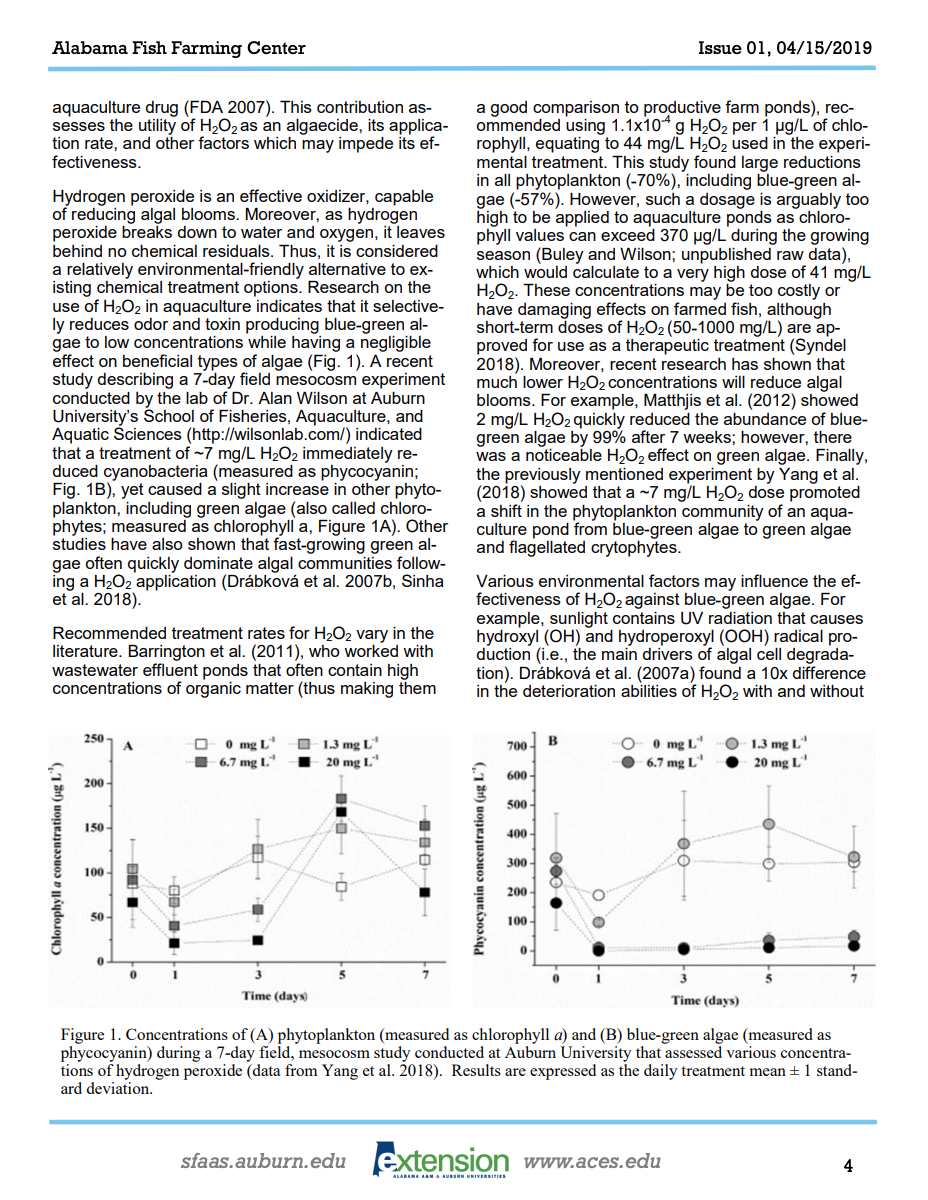
Citation
Buley, R. P., Z. Yang, M. F. Gladfelter, and A. E. Wilson. 2019. Controlling blue-green algal blooms in aquaculture ponds using hydrogen peroxide. Fish Farming News 2019(1):3-5.
Abstract
Excessive blue-green algae (i.e., cyanobacteria) can harm aquatic organisms, including farmed fish. Although algal populations may be beneficial as they acquire excess nutrients, including potentially toxic forms such as nitrite and ammonia, and produce oxygen through photosynthesis, large algal blooms may lead to anoxia as decaying cells are decomposed by bacteria. In addition, some select strains of blue-green algae may produce chemicals that harm fish health (e.g., microcystins, nodularins) or cause fish filets to taste muddy (i.e., geosmin, 2- methylisoborneol). Both situations can cause significant economic losses to fish farmers around the world.
As our understanding of nuisance algal blooms continues to grow, so too do the means to combat these events. Developed methods can often be placed into the groupings of chemical, biological, and physical controls. Of these, chemical controls have been used to great effect; however, there is concern that some approved algaecides may persist in the environment for extended periods of time and, in certain situations, are too broad-spectrum in their toxicity to be practical. Consequently, alternative chemicals are actively being researched. And, although many algaecides exist, hydrogen peroxide (H2O2) has proved quite effective at reducing blue-green algae (Kay et al. 1982), and is currently an approved FDA
aquaculture drug (FDA 2007). This contribution assesses the utility of H2O2 as an algaecide, its application rate, and other factors which may impede its effectiveness.